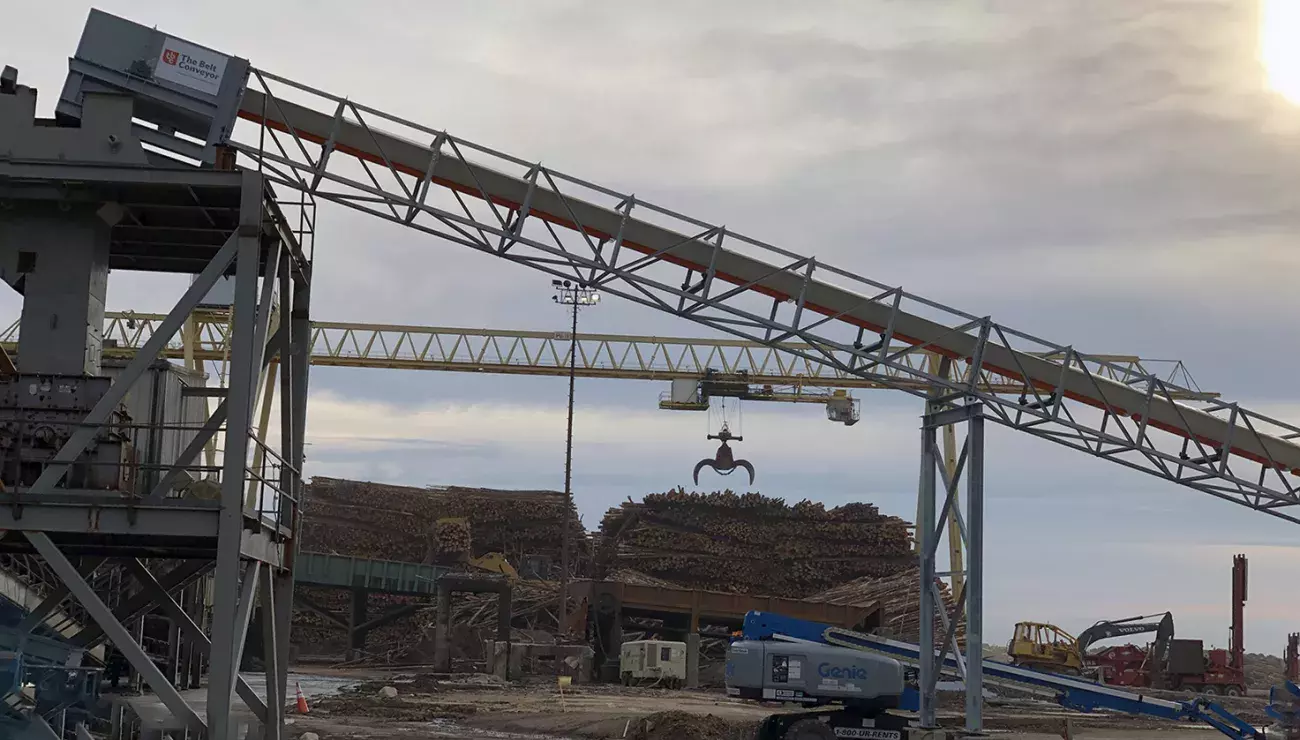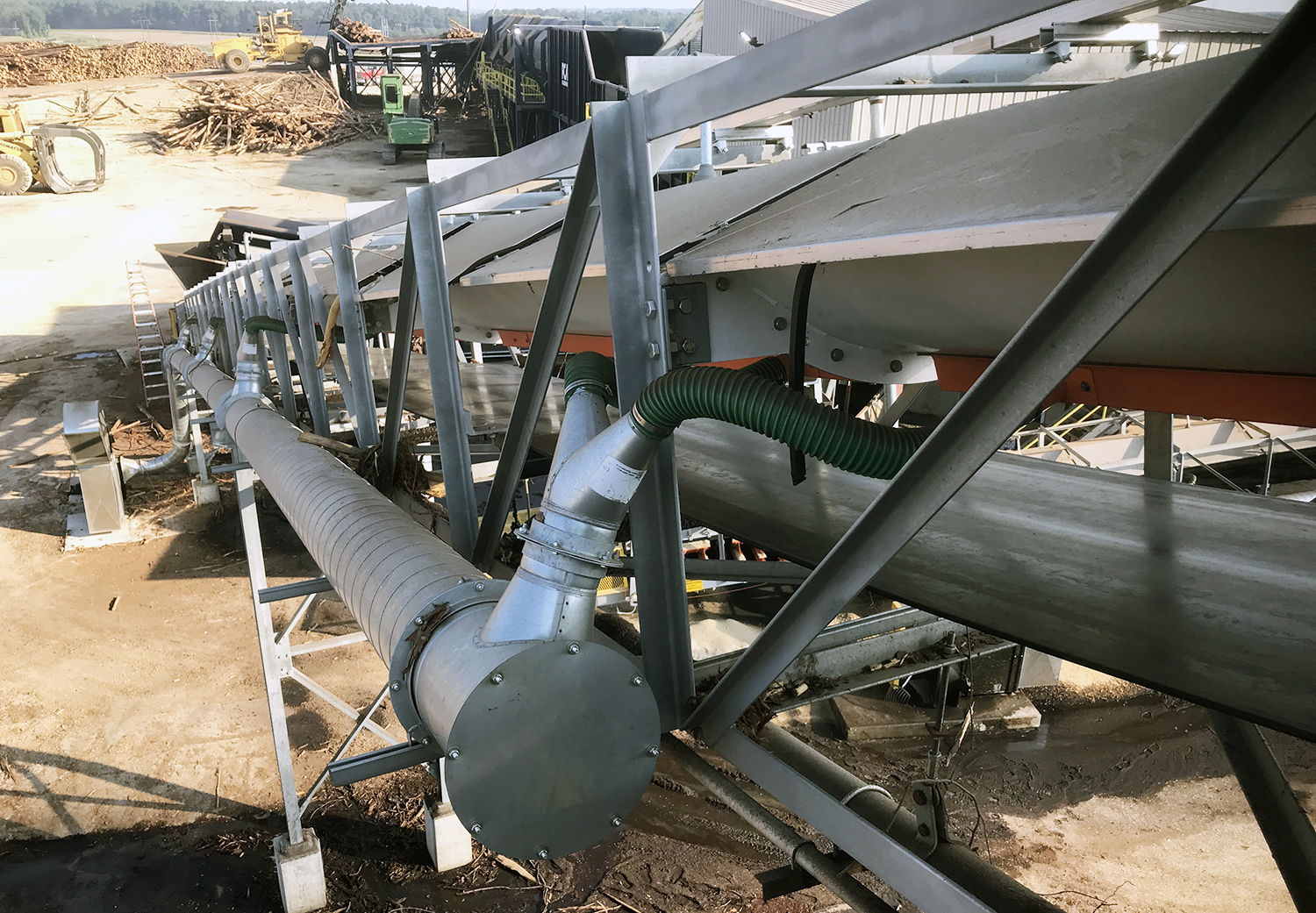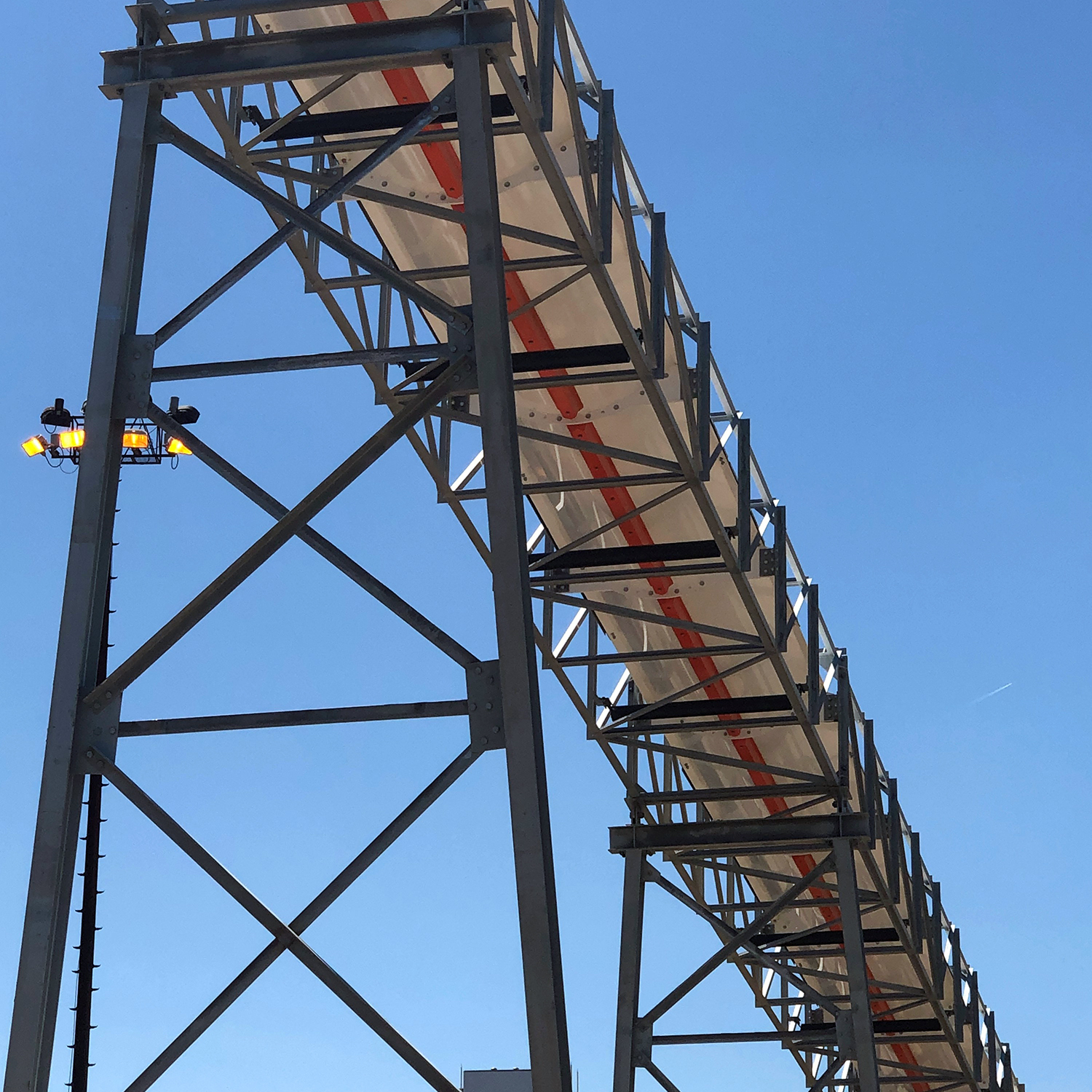
Floating on air: new conveyor technology bypasses traditional limits
18 Mar 2020New air-cushioned conveyor technology from Bruks Siwertell makes its debut at a packaging company in the US, at its highest-volume mill, promising to reduce operating and maintenance costs.
For decades, conveyor belts have been the principle method of carrying raw materials over long distances in an energy-efficient way. Their design blueprint is so commonplace, and simple – a flat belt stretched over rollers – that it is rarely given a second thought. However, just because the design has stood the test of time, spanning the industrial revolution more or less unaltered, not every conveyor belt can be ‘The Belt Conveyor’.
It combines the use of air-cushion technology with a standard Bruks belt conveyor, ensuring low friction, high capacity conveying that offers minimal equipment wear and very low operating costs. The first installation to benefit from this innovative technology was the company's high-volume mill.

Maximizing throughput
A manufacturing plant’s profitability depends on efficiency and production yields, therefore any system that can enhance this is beneficial.
The US-based containerboard plant uses processed wood, including bark and wood chips, in the production of paper and lightweight linerboard, and contributes to its undisclosed owner's annual production of over 4.1 million metric tons of kraft linerboard and corrugating medium for cardboard packaging.
In 2018, the mill's owners made the decision to install three new air-supported belt conveyor systems from Bruks Siwertell on a turn-key basis. The conveyors were added as part of a new log-line to increase the plant’s capacity.
The new fully-enclosed conveying system was delivered in May this year and comprises a 1.4m (54in) wide belt x 122m (400ft) long conveyor, which handles wood chips at 550t/h; and two further conveyor units, one 1.0m (36in) x 39.6m (130ft) and one 1.0m (36in) x 91.4m (300ft), for handling hogged and unhogged bark at a rate of 60t/h. The belt conveyor systems were manufactured at Aztek Technologies in Monterrey, Mexico.

Managing different materials
“We were able to offer a turn-key solution and hands on customer service at a price that others could not compete with,” explains Zack Hood, Manager, Conveyor Technology Solutions, Bruks Siwertell. “Given that this is the first installation of the belt conveyor, we are very keen to see the full scope of what it can deliver to an operator.
“At this particular mill, the same system is being used for three different types of material, which is in keeping with the Bruks Siwertell design philosophy to build in flexibility from the outset. The requirements of these three materials are similar, but still distinct. Hogged bark, for example, contains high levels of dust.
“The system has now been running successfully for several months, but as with any new installation, it was important to review it,” notes Mr Hood. “In September, Bruks Siwertell engineers returned to make some modifications. The belt tension on the unhogged belt conveyor was increased and it was noted that its covers need adjustment to allow for peak surges. Also, because of significant carry-back – residue that is left on the belt – due to the sticky nature of pine wood chips, the belt scrapers needed to be adjusted. The hogged bark conveyor was running well and clean.
“Overall, we are pleased with how the systems are performing and early feedback is good,” he says.
Removing the rollers
The main area of concern with conventional conveyors is idlers. These are the unpowered rollers underneath a conveyor belt which support the weight of the belt and material as it goes along. Fundamental to the design of the belt conveyor is that it does not use them, greatly reducing maintenance costs and eliminating the risk of friction fires, caused by idler cans seizing up.
“The customer greatly valued the potential operational and maintenance cost reduction offered by the new air-supported belt conveyor,” Mr Hood adds.
It delivers other advantages over conventional conveyor systems. Typically, idlers are spaced at intervals of around 1.2m, every time the belt passes over them there is a slight bump. This motion has a sifting effect, causing any finer grains from the cargo to filter through thicker particles to the surface of the belt, which leaves a layer of fine material on the belt itself. Regular cleaning and associated downtime are therefore required.
The belt conveyor is different. “The belt conveyor features a pressurized air enclosure system underneath the belt. Think of it as being similar to the puck on an air hockey table,” highlights Mr Hood. “The air, fed in through the bottom, is what is used to lift the belt, rather than a sequence of idlers. So, you can have a system with a continuous supply of air, pressurized in such a way that the movement is continuous and there are no vibrations.”
Each 3m section of the belt has access to a common header of pressurized air, and under the carry-side pan is a 3m pressurized air enclosure system.
New but familiar
The belt conveyor’s rolled plate matches the profile of a 35-degree idler cross-section, without the rollers. This allows the system to conform to the industry-standard calculations for the USA’s Conveyors Equipment Manufacturers Association (CEMA).
“We expect substantial growth in demand for this product once word of its benefits spread. The uses for this technology are by no means limited to the forestry and pulp mill trades, but we can already see this new tool is going to change how things are done in this sector.”
For more information, please send an email to sales@bruks.com
 Bruks-Siwertell
Bruks-Siwertell